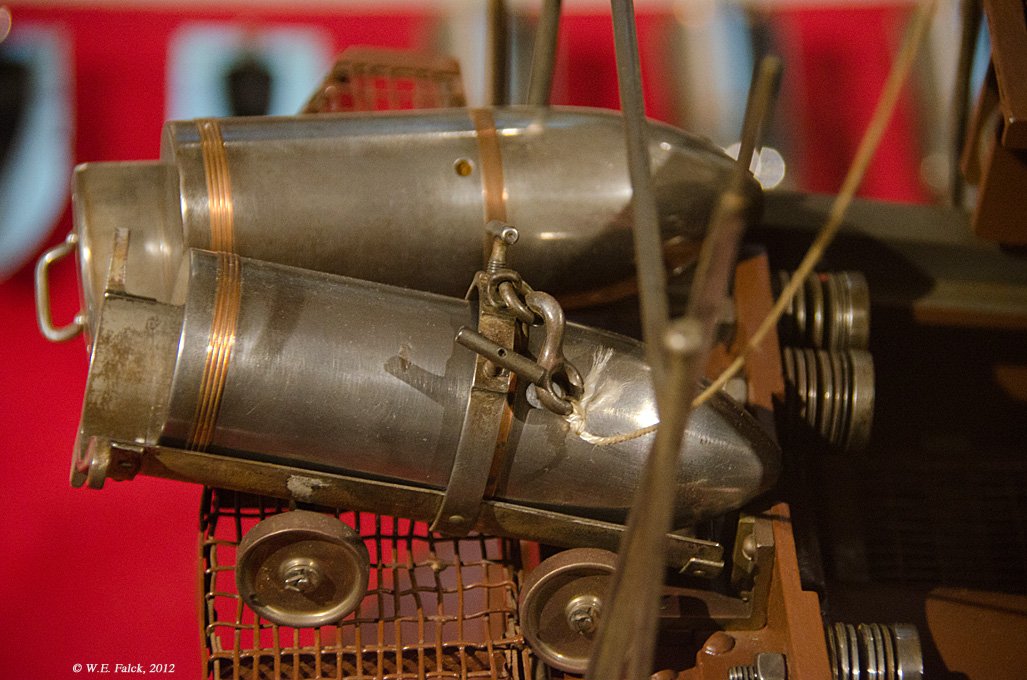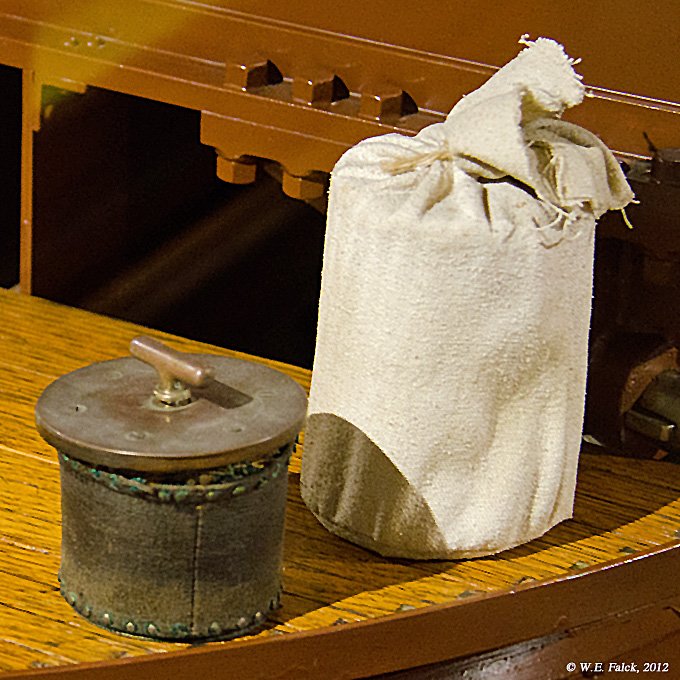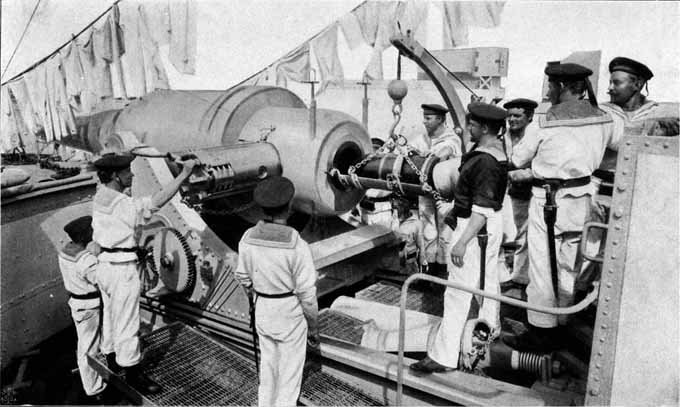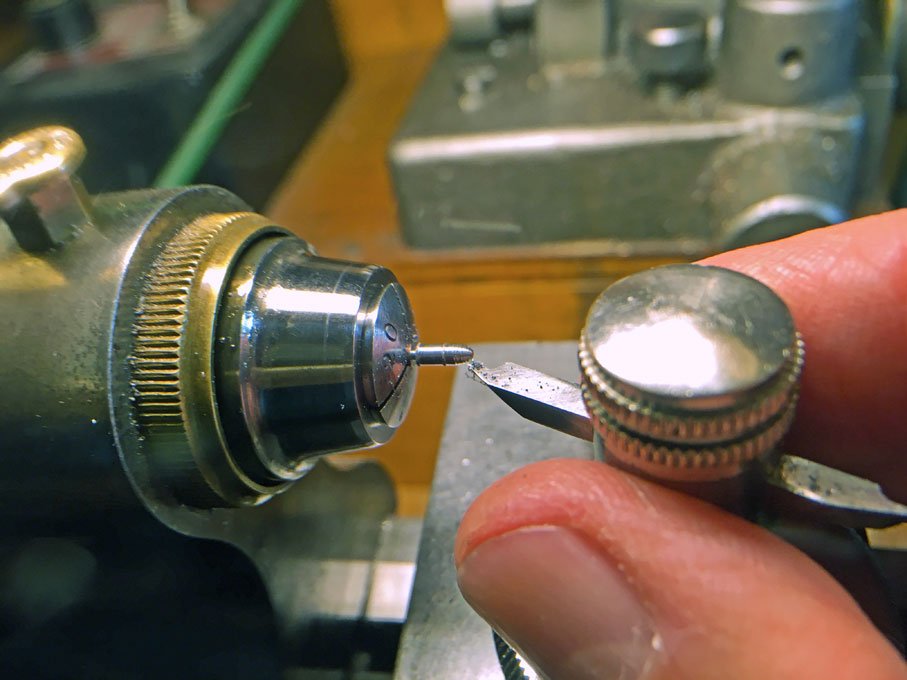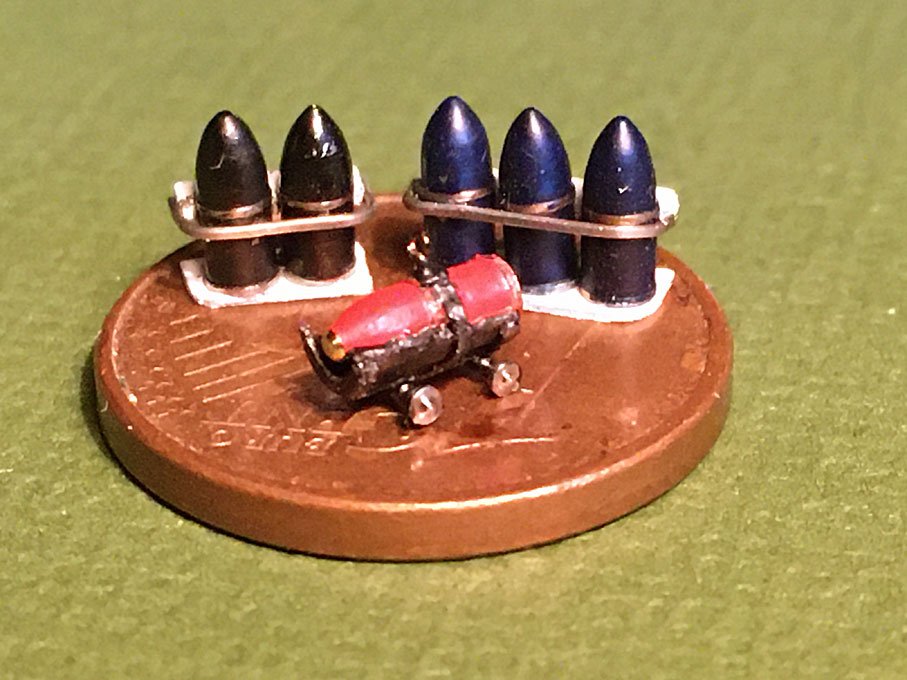-
Posts
6,459 -
Joined
-
Last visited
Content Type
Profiles
Forums
Gallery
Events
Everything posted by wefalck
-
Good idea and the results look great on the two examples ! However, it may depend on the type of primer used, which has to take a clean line without fuzzy edges. It also requires priming, which I often try to avoid in order to not build up unnecessary paint layers. Have to watch the video tonight in order to get more insights.
-
Trouble is, that such 'debonders' break up the cross-linking of resins such as CA. When you use varnish, the solvent would just soften it, allowing you to reposition the part. I have been working for so long with aceton in the lab (we used to rinse glass-ware after washing it to dry quickly), the a few drops here and there now don't shorten my life too much ...
-
Some people also grind half away half of the eye of a sewing needle, leaving a forked end, and hold the needle in a pin-vice or in a round length of wood. Some people also use wire-loops (steel wire preferred, as copper ions can inhibit the curing of CA). Any cured CA can be burned off with a cigarette lighter flame. Once the needle has been heated to a red-hot it can also be bent to shape to reach difficult places. Personally, I don't like CA too much and use a fast drying varnish to attach small parts. One has to be aware, however, the bond often is less strong. One has to make trade-offs between ease of application (with a fine brush in the case of varnish), the possibility to correct positioning (by using solvent), and the strenght of the bond.
-

Self-made small horizontal milling machine
wefalck replied to Bitao's topic in Modeling tools and Workshop Equipment
You are right, for certain milling operations the visibility is much better on a horizontal mill, than on a vertical mill, though they would be geometrically possible on both types. -
OK, you are already quite a bit into the project, but otherwise I would have considered to write to Gilberto Penzo, who runs the Web-site www.veniceboats.com, is the historian of Venice boats and has written several books on the subject, to see, whether he can point you to resources. He is a nice guy and speaks English actually. I visited him in his shop or workshop on several occasions. I would have to check in his books, whether there is any information on the brazzera. Good luck with the project.
- 55 replies
-
- fishing boat
- Fishing
- (and 4 more)
-

Self-made small horizontal milling machine
wefalck replied to Bitao's topic in Modeling tools and Workshop Equipment
That's a pretty big machine ... What is the brass part on the middle of the x-y-slide, a steady to support long parts when milling in the dividing apparatus ? -
Sometimes I have feeling that there is a competition out there for who makes the most complicated and intricate designs I gather this internal frieze is actually hiding the duct for the aeration for which are these turquoise shaped vents on the roof ? The colour of these vents doesn't look terribly nice in my eyes - brass would be more stylish ...
-
The problem was that the the tactical concept for which they were designed became quickly outdated a few years after they were built. The idea was to put an extra-heavy gun behind some armour plate and then fire from a safe distance at enemies (thinking mainly of the French) that could not get close enough in the tidal waters of the German North Sea coast or in the narrow and shallow sunds of the Baltic. They were meant to be a sort of mobile detached fortress for coastal protection. However, when they went into service, the mobile torpedo was invented and successfully made operational. And then a few years after that QL guns were designed. So they became quite vulnerable and were not particularly seaworthy. They were refitted in the later 1880s with two underwater torpedo-tubes in the bow, two QL 8.7 cm guns in the rear and two Hotchkiss 3.7 cm revolving guns that could be switeched between different pivots. SMS WESPE was the first ship of the Imperial German Navy that was designed to make do without any sails right from the beginning. While the class was commissioned, some other, larger armoured ships without any sails were built, but this SACHSEN-class was also conceived as coastal defence ships, the naval doctrine under Bismarck being entirely defensive. Hence they had a limited range of action, relying on the home ports for recoaling.
-
The DSM in Bremerhaven is undergoing a refurbishment, restructuring and re-orientation at the moment. It seems that they are replacing the 'S' in their name, that once stood for their mission, with an O, that stands for Ocean and makes them drift into the environmental, sustainability and social sphere. Important subjects in their own, but it is sad to see that another 'technical' or 'historical' museum forgets its original mission. We already have a couple of museum with this 'O' in their mission, so the question is, what is gained. I recently found that their library/archive is still responsive and helpful, which is a positive sign.
-

Modelling locks or Latches
wefalck replied to jackieofalltrades's topic in Metal Work, Soldering and Metal Fittings
Thanks, but I don't think, my wife would like this ... -
https://www.finemodelships.com/ is indeed a kind of co-operative marketing site, as I understand. I do know its operator Dr. Michael Czytko (he is a member of our German shipbuilding history association), but as I am not interested in buying or selling, I don't know anything about the modus operandi of the site. Some links also point to www.modelships.de. When you do a search for Rainer Wedel on the Internet, a few links pop up. He seems to be a former pilot and to work also for the German Maritime Museum in Bremerhaven as a shipmodel builder. Most of his subjects seem to have been taken from NIELSEN, C. (1973): Danske Bådtyper.- 152 p., København (Høst and Søns Forlag). NIELSEN, C. (2006😞 Danske Bådtyper.- CD-ROM, Helsingør (Handels- og Søfartsmuseet). The CD-ROM can be ordered from the museum Web-site. I don't know anything about the oher guy, a Dutchman, Jan van den Heuvel. However, there are abundant resources on Dutch vernacular craft, if it is that what you are interested in.
-

Stoves/Ovens on ships in the 1600s and Onward
wefalck replied to acaron41120's topic in Nautical/Naval History
The (digital) archives of the Danish Naval yard in Copenhagen are full of detailed drawings for stoves and baking ovens from the 18th century onward. They became more and more sophisticated also with the view to make them fire-safe. -
Thanks, Keith. I had a look over the oldest known version of the plans and counted 60 rounds in total, not counting the (assumed) two drill dummies. It seems that the barrels only lasted for a few hundred shots, before the powder chamber and some of the rifling was eroded. I doubt that the guns ever fired that many life shots. The shells were also rather expensive. Most of the time aiming practice was done with hand-gun barrels mounted into the gun, but the arrangements for this particular gun are unknown.
-
It certainly requires less practices and dexterity than the T-rest, though sometimes I still use it. The strange thing is that Lorch, Schmidt & Co. seem to have been the only manufacturer that ever offered such a hand-held toolrest - perhaps the professional watchmakers frowned on it, being proud of their capabilities with lozenge-shaped graver.
-
Thanks, gentlement ! Druxey, the Lorch graver-holder was supplied together with a small table, that has a T-slot on its underside and fits on the holder for the so-called T-rests on 40 mm centre-height so-called D-bed watchmakers lathes. On my 50 mm centre-height WW-style watchmakers lathe this would be too low, but I have a special raising block that clamps onto the bed. Here are my specimen on http://www.lathes.co.uk: http://www.lathes.co.uk/lorch/img35.gif Recently, Mr. Gottwaldt (gg-tools) has started to sell a reproduction of this graver-holder, but without the table it seems: https://www.ebay.de/itm/28074-GG-Tools-STICHELHAUS-STICHELSTOCK-FUR-DREHSTAHL-Uhrmacherdrehbank-DREHBANK/143752548776?hash=item217851d1a8:g:BZMAAOSwyRdb6dZu. However, it is adjustable over a greater height range than the original and therefore can be adapated to different types of lathes. One would just need to provide a flat and smooth surface that is exactly in the plane of the lathe axis, e.g. a plate screwed onto the cross-slide.
-
Thanks, Keith ! ************* Ammunition and ammunition handling Thanks to a book published in 1886 by Carl Galster, we are relatively well informed about the ammunition of the German naval artillery of that time. The WESPE-Class was the only class of ships fitted with the Rk 30,5 cm/l22. According to Galster, three types of projectiles were available for these guns in the late 1870s/early 1880s: a) armour-piercing shells, b) shells with a time-fuse, and b) dummy shells for gun-drill. All shells had two copper guiding rings that would be squeezed into the rifling. One ring sat shortly above the bottom and the second ring where the cylindrical part would transit into the ogival part of the shell. The armour-piercing shells were cast in a particular way to harden the steel from which they were cast. They were hollow, but with only a relatively small chamber for powder in the rear part. The nose was cast solid. However, at that time functional impact fuses were not yet available, so the shells were filled with a mixture of sand and sawdust to give the approximate weight distribution as a powder charge would give. The threaded hole for the fuse in the bottom was simply plugged. Armour-piercing shells were painted blue. The ordinary shell had thinner walls and consequently a larger power-charge. The nose was threaded for time-fuses. It is beyond the scope of this building-log to discuss the fuses in detail, it suffices to say that these were made from brass. Shells were painted red and when actually charged with powder marked with a black ring around the nose. Shells in handling cradles on the Copenhagen demonstration model (note that in real life the shells would be painted and the museum placed them the wrong way around into the cradle) Dummy shells were ‘seconds’ of ordinary shells filled with a sand-sawdust mixture to give the same weight as a real shell. The hole in the nose was closed with a wooden plug. They were painted black all over. Powder charges were supplied in cylindrical bags. Each bag weighed 46 kg. Up to two bags could be loaded, allowing to adapt the firing range. The bags were stored and handled in cyclindrical boxes lined with zinc sheet or where made from German silver. Powder bag and tampion at the demonstration model in Copenhagen A total of five shells were kept ready in the open barbette. I would assume that these would be only the armour-piercing and drill ones, as the fuse of ordinary shells would be rather exposed to the elements. I set out to make six shells in total, three armour-piercing and two drill-shells, that were stored in their respective racks in the barbette. The sixth is an ordinary shell to be placed in the shell-cradle under the crane. My preferred steel in the workshop are copper-coated welding rods. The copper-coating is very convenient here, as their diameter of 2 mm is exactly the scale diameter over the copper guiding rings. The nose was turned free-hand with my special Lorch, Schmidt & Co. graver holder. The shells are 4.8 mm long. For the live shell, a little brass button was turned and inserted into a pre-drilled hole in the nose. Free-hand turning of the shell nose It not clear, how the heavy shells (weighing around 330 kg) were handled inside the ship and hoisted to the level of the barbette floor. The crane on the gun-carriage does not actually reach over the access-hatch to the shell-store through which the shells presumably were hoisted. The drawings are not clear on the various hatches in the barbette and over the shell-storage, because of various elments being hidden behind others and therefore not drawn. I will have to live with this ignorance. On the decks, the shells were wheeled around in trolleys. In the Rigsarkivet in Copenhagen a blue-print (in the true sense of the word) for such a trolley has survived. The trolly forms a cradle that can be hoisted by crane to the breech of the gun. At the rear of the gun two hooks are provided (not realised on the model) into which the cradle hooks. The shell then can be pushed into the gun with a rammer. Gun drill, showing the cradle hooked to the gun (LAVERRENZ, 1900) The parts for the trolley where laser-cut and assembled using zapon lacquer. Effectively the trolley was built around the shell for rigidity. A hole was drilled into the shell to secure the hoisting ring. The racks for the ready shells were laminated together from laser-cut pieces and painted white. The retaining bar was made from flattened pieces of 0.3 mm diameter copper wire that was chemically tinned. In theory, each individual shell should have had its own retaining ring (keeping in mind how important it is to restrain these 300 kg beasts in anything but the slightest sea), but after several attempts to put these into place without damaging the paint-work on the shells too much, I gave up. Flattening the wire reminded me of another pending workshop project, namely a micro-rolling mill to produce metal strips of consistent width and thickness from soft wire. The finished ready-shells (close-up photographs are terribly sobering ...) Reference: GALSTER, C. (1886): Pulver und Munition der deutschen Marine.- 99 p., Berlin (E.S. Mittler & Sohn). To be continued ...
-
Keith, I thought of a galley as well, but the scuttle seemed to be rather large for that purpose. Or did they cook shrimp on board, as they do along the German, Dutch and Danish North Sea coast ? I gather Gary will enlighten us on this subject once North America wakes up again.
-
No comments needed any more on the work ... but I was wondering what a coal-scuttle was doing on such a boat ?
-
I don't want to make myself unpopular, but speak from experience: every time I looked into and even bought (styrene) kits with a view to cut corners in a project, I became dissatisfied and decided that it would not be worth using it, considering the amount of alterations and replacements needed. And this is not a question of available tools and machines (though they help in my opinion). Using styrene sheets and profiles, one can build excellent models with a minimum of tools. It is a pity that kit manufacturers adopted certain conventions (e.g. the deeply grooved decks, prominent wood textures) decades ago in spite of often otherwise quite well researched design bases. The moulds of Revell and others are decades old and when they take a copy, they are still not improved in that sense - I know, it is a question of commercial margin and the stuff sells, which is what counts.
-
Timber-textured ones would be rather unsuitable for ship models, because in real life the shipwrights and later the bo'suns etc. would have done everything to make the wood smooth - see also the discussion above on visible vs. hardly visible details. The molded wood textures (and other engraved details) in model kits satisfy the expectations of innocent buyers, but are utterly overscale in most cases.
-

scribed deck caulk lines
wefalck replied to closehaul's topic in Painting, finishing and weathering products and techniques
Have a look at my suggestions in this very similar thread;
About us
Modelshipworld - Advancing Ship Modeling through Research
SSL Secured
Your security is important for us so this Website is SSL-Secured
NRG Mailing Address
Nautical Research Guild
237 South Lincoln Street
Westmont IL, 60559-1917
Model Ship World ® and the MSW logo are Registered Trademarks, and belong to the Nautical Research Guild (United States Patent and Trademark Office: No. 6,929,264 & No. 6,929,274, registered Dec. 20, 2022)
Helpful Links
About the NRG
If you enjoy building ship models that are historically accurate as well as beautiful, then The Nautical Research Guild (NRG) is just right for you.
The Guild is a non-profit educational organization whose mission is to “Advance Ship Modeling Through Research”. We provide support to our members in their efforts to raise the quality of their model ships.
The Nautical Research Guild has published our world-renowned quarterly magazine, The Nautical Research Journal, since 1955. The pages of the Journal are full of articles by accomplished ship modelers who show you how they create those exquisite details on their models, and by maritime historians who show you the correct details to build. The Journal is available in both print and digital editions. Go to the NRG web site (www.thenrg.org) to download a complimentary digital copy of the Journal. The NRG also publishes plan sets, books and compilations of back issues of the Journal and the former Ships in Scale and Model Ship Builder magazines.




